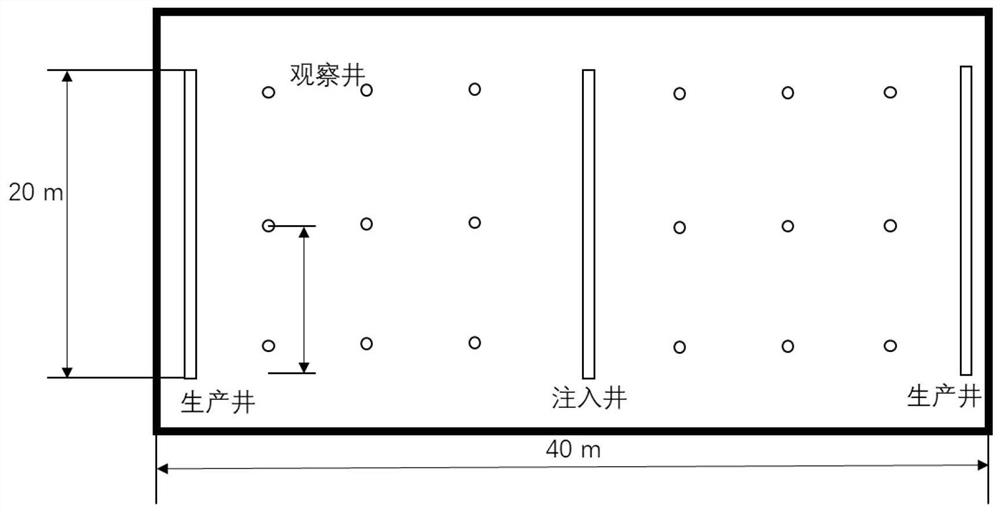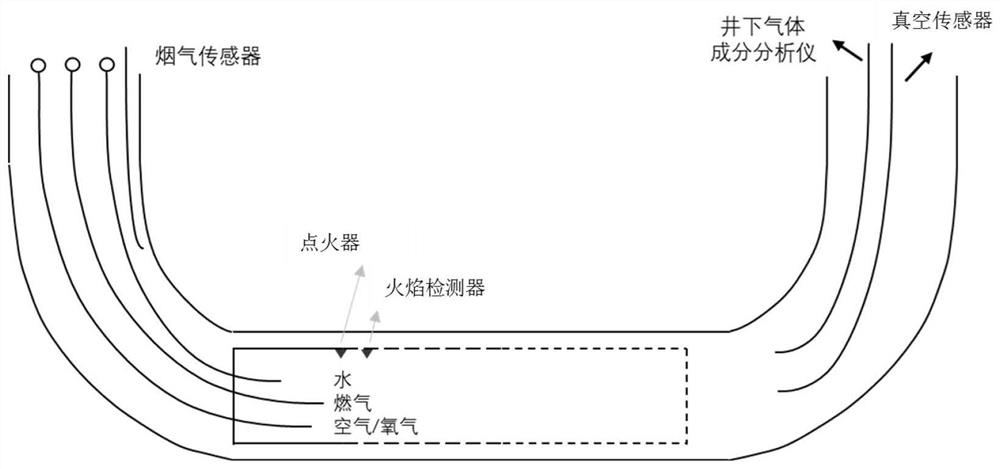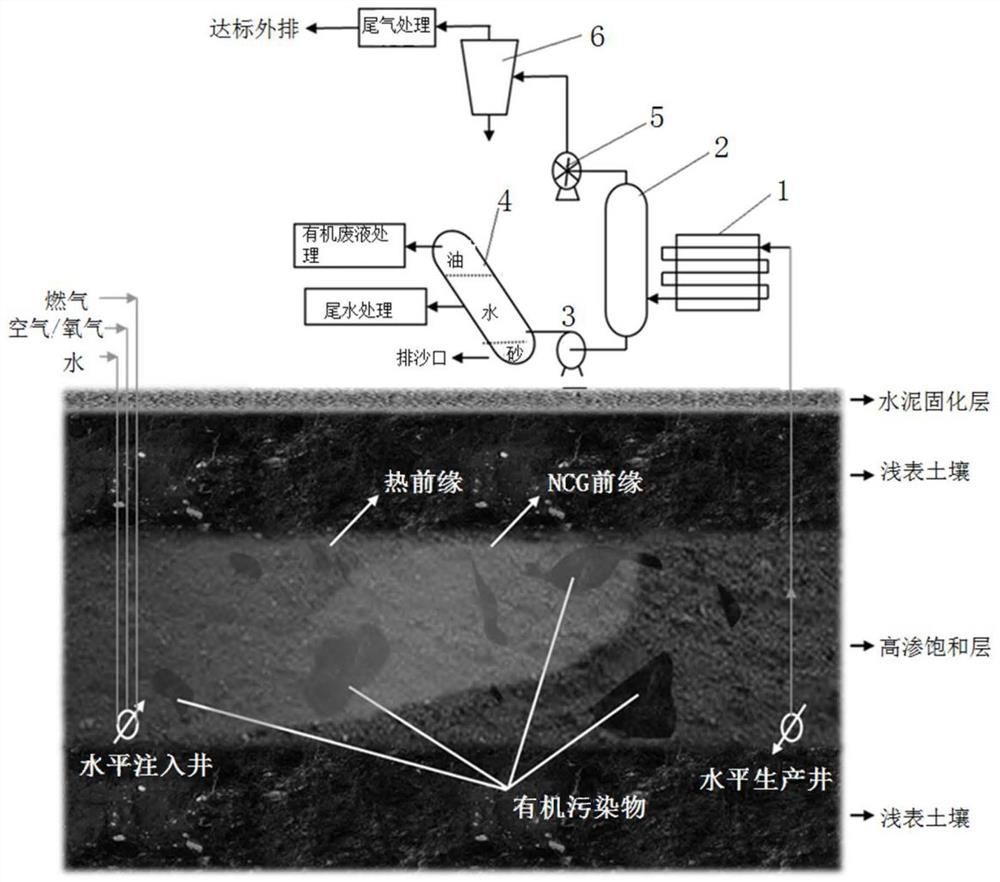Method for removing organic pollutants in stratum by generating multi-element thermal fluid in situ
A multi-component thermal fluid and organic pollutant technology, applied in the field of formation organic pollutant removal, can solve problems such as increasing carbon emissions, and achieve the effects of improving permeability, improving heat utilization efficiency, and reducing the number of wells
- Summary
- Abstract
- Description
- Claims
- Application Information
AI Technical Summary
Problems solved by technology
Method used
Image
Examples
Embodiment 1
[0068] Taking the chloroform asphalt contaminated soil block with higher boiling point as an example, the restoration method of the present invention is as follows.
[0069] Select a polluted soil plot with a length of about 20m, a width of 40m, a pollution thickness of about 7m, and a groundwater level of about 12-15m. The texture of the polluted area is mainly silt or fine silt, and the permeability coefficient is 0.5-5m / d.
[0070] Such as figure 1 As shown, in order to complete site restoration at low cost and high efficiency, a horizontal injection well with a length of 20 meters and a diameter of 25 cm is set in the middle of the site. Horizontal production wells are arranged on both sides of the site, the wells are 20 meters long and the diameter of the horizontal production wells is 17.8cm. The electric submersible pump is lowered into the horizontal production well or connected to the surface extraction pump. 18 observation wells are arranged in the middle of the si...
PUM
 Login to View More
Login to View More Abstract
Description
Claims
Application Information
 Login to View More
Login to View More - R&D
- Intellectual Property
- Life Sciences
- Materials
- Tech Scout
- Unparalleled Data Quality
- Higher Quality Content
- 60% Fewer Hallucinations
Browse by: Latest US Patents, China's latest patents, Technical Efficacy Thesaurus, Application Domain, Technology Topic, Popular Technical Reports.
© 2025 PatSnap. All rights reserved.Legal|Privacy policy|Modern Slavery Act Transparency Statement|Sitemap|About US| Contact US: help@patsnap.com



